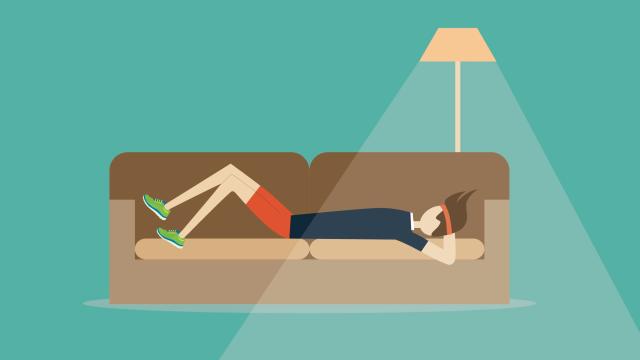When it comes to resting for recovery, there are two categories. The first is passive rest — the “do nothing” approach, in which you take time off to relax, and avoid anything that resembles training. Active rest, by contrast, is a technique aimed at helping you recover by by going through the motions of your workout, but at reduced intensity or volume.
For example: say that for your regular workout you can squat 130 pounds for a maximum of 10 reps. On an active rest day, you would do half or two-thirds of that weight, so around 65-90lb, for 3-5 reps. Essentially, the session should be easy: you shouldn’t be taxed by the weights or intensity of your workout, so you’re not adding to the total stress caused by your regular workouts.
But if we’re worried about stress, why bother with active rest at all? Why not just take the day off? There’s a reason behind active rest: by purely going through the motions of your workout without pushing yourself, you’ll be able to progress and recover faster.
First, it gives you the opportunity to focus on your problem areas. If you have trouble squatting with proper form, or you’re working on your running stride, taking the intensity down a notch can help you concentrate on correcting problems without being distracted by actually having to push yourself.
Active rest may also help boost recovery. By keeping your body moving, you’ll increase blood flow to the areas affected by your regular workouts, thereby bringing the necessary nutrients needed for muscle recovery. There’s also the added advantage of burning calories — a bonus if your goal is to get lean.
To incorporate active rest into your program, Lyle McDonald, nutritionist and author, gives the following rules to follow for effective active rest:
- Volume should be 1/2-2/3 of a normal workout.
- Intensity should be perhaps 60% maximum heart rate for endurance athletes and up to 75% of 1RM for weight trainers.
- You should finish the workout feeling better than you started.
Try to incorporate an active rest day once a week, after your hardest workout, for the most benefit. For a more in-depth look at active and passive rest, check out Lyle’s article in the link below.
Active Versus Passive Recovery [bodyrecomposition.com]

Comments